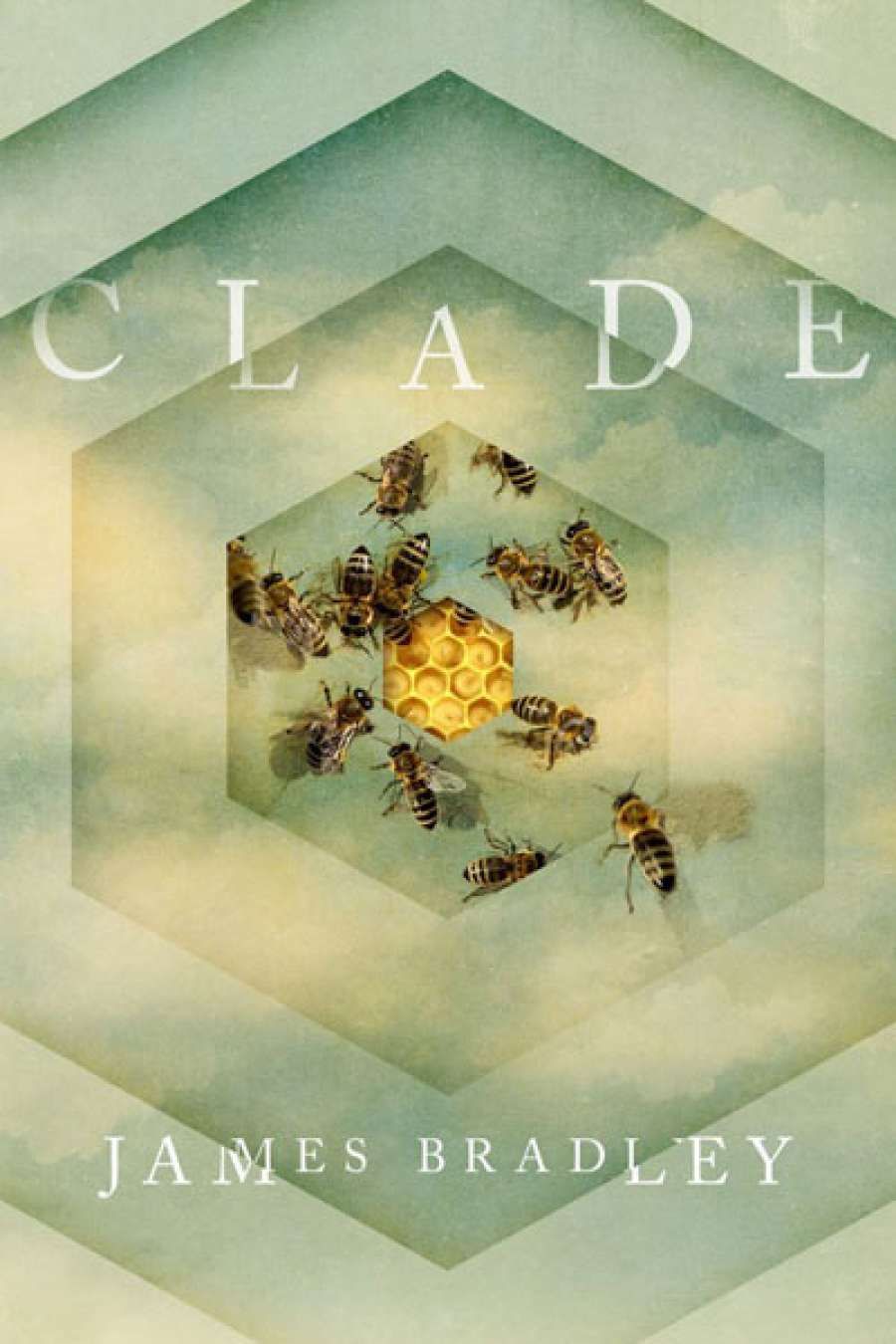
- Free Article: No
- Contents Category: Fiction
- Custom Article Title: Amy Baillieu reviews 'Clade' by James Bradley
- Review Article: Yes
- Online Only: No
- Custom Highlight Text:
Set in an unsettlingly convincing near future, James Bradley’s fourth novel, Clade, opens with climate scientist Adam Leith walking along an Antarctic coastline reflecting on the state of the world and on his relationship with his partner, Ellie. After six years together, their relationship is under pressure as Ellie undergoes fertility treatment. Adam is ambivalent about bringing a child into a world that he has recently conceded to himself is ‘on a collision course with disaster’, while Ellie is fiercely determined to do so. Now, as the ground both literally and metaphorically shifts beneath Adam’s feet, he waits for Ellie to call him with the results of her latest round of treatment.
- Book 1 Title: Clade
- Book 1 Biblio: Hamish Hamilton, $32.99 pb, 239 pp
Bradley is an author, blogger, and Pascall Prize-winning critic with wide-ranging interests across the cultural spectrum, from John Wyndham and Doctor Who to autopoiesis and the poetry of Li Po. His first three novels are, on the surface at least, a disparate trio. Wrack (1997) deals with obsession, murder, and the search for the mysterious Mahogany Ship, while The Deep Field (1999) is an ambitious meditation on photography, existence, and love set in another vision of the near future and framed by the reflections of a 300 year old woman. The Resurrectionist (2006) is a dark journey into the macabre world of bodysnatching in 1820s London, with an Australian coda. Nevertheless, like the climate change driven Clade, they share deeper thematic and tonal similarities as Bradley continues to investigate questions of time, memory, loss, and the complexities of human nature.
At times, Clade resembles an intensified version of The Deep Field in which future technologies are more streamlined, stakes are higher, and hopes for the future are both brighter and more precarious. There are other similarities, too, such as the numerous parallels between Ellie and The Deep Field ’s main protagonist, Anna. However, unlike The Deep Field, Clade is essentially an ensemble piece composed of interconnected short stories which all link back to Adam and Ellie. Each story shifts forward in time and offers new insights into a rapidly changing world as it lurches ominously from one new normal to the next.
Presenting the narrative as a series of discontinuous episodes allows Bradley to cover roughly half a century, and many major developments, with a relative lightness of touch. For all the plagues, floods, outbreaks of civil unrest, mass extinctions, extreme weather, and unsettling new technologies it depicts, Clade remains largely focused on the personal, and on the strength and vulnerability of the human heart. Bradley elegantly evokes the subtleties of his characters’ evolving relationships, while also exploring humanity’s deeper connections through history and language, and our place in relation to the rest of the natural world and wider universe.
The stories work particularly well individually, offering tantalising glimpses of an increasingly perilous world, but read as a novel their effect is quite uneven. Major global events are alluded to in offhand, jolting asides, while some narrative strands are left frustratingly unresolved, and one wishes that a few more clues about the fates of certain characters had been scattered throughout the later stories.
In a sense, the reader is left with no choice but to allow the characters and questions from one section to simply recede when the next begins. This constant establishment of new and often disconcerting narrative equilibriums echoes a theme that is repeated in Clade with several characters reflecting on the human capacity to adapt, and contemplating ‘how easily and irrevocably the present replaces the past, how what had seemed immovable, permanent, simply fades and vanishes’. One character, mourning a significant loss, muses on the way that ‘ordinary life kept fighting its way in, so that grief was never constant but a series of shocks, each one as new, as raw, as the first’. In some ways, this resembles the reader’s experience; each story brings its own shocks, changes, and traumas, which then dissolve as the next narrative wave hits.
Bradley’s prose is socially engaged, and carefully structured, and the ideas and concerns he returns to in Clade are timely and important. Unfortunately the writing is weighed down in places by heavy-handed foreshadowing, symbolism, and philosophical exposition, such as when Adam reflects on what it might really mean to celebrate the Solstice in the opening section (‘Solstice’), or when a discussion of mysterious mass deaths among bee populations (‘The Keeper of Bees’) is swiftly followed by a plague striking humanity with similar effects in the next section (‘A Journal of the Plague Year’). There are also moments when a character’s moral indignation and righteous anger over things such as media coverage of the climate change debate (‘Monsoon) or the chillingly inhumane treatment of refugees (‘The Keeper of Bees’) lose their impact as the writing adopts tones that seem unnecessarily didactic.
Despite the often brutal realities portrayed in this uncompromising and inventive vision of our future, Clade ends on an uncertain yet surprisingly hopeful note as a girl withdraws from her friends to look at the shimmering colours in the night sky, caused by ‘a new instability in the Earth’s magnetic fields’. Wonder and grief combine as she watches the ‘soundless dance of the Shimmer, the swirling shift of its motion … And she realises that whatever else happens, this is not an end but a beginning. It is always a beginning.’


Comments powered by CComment